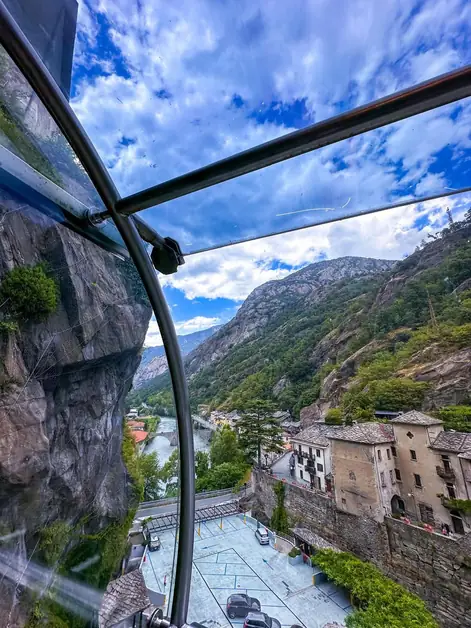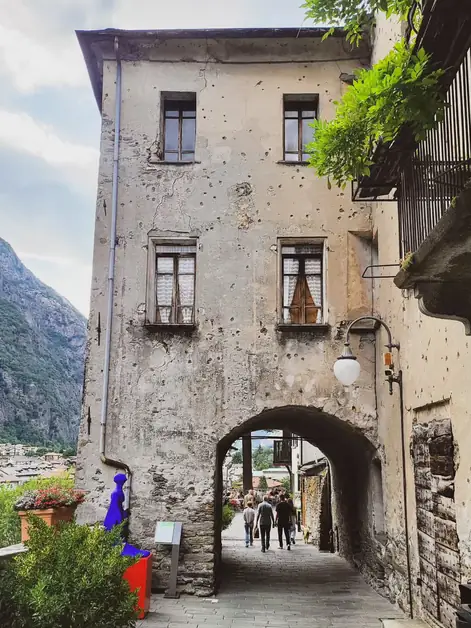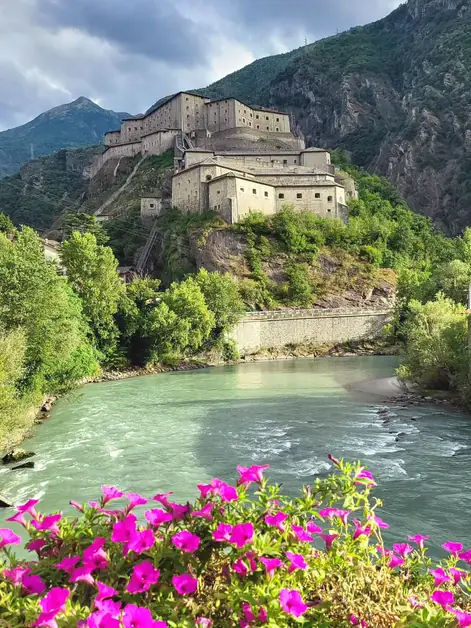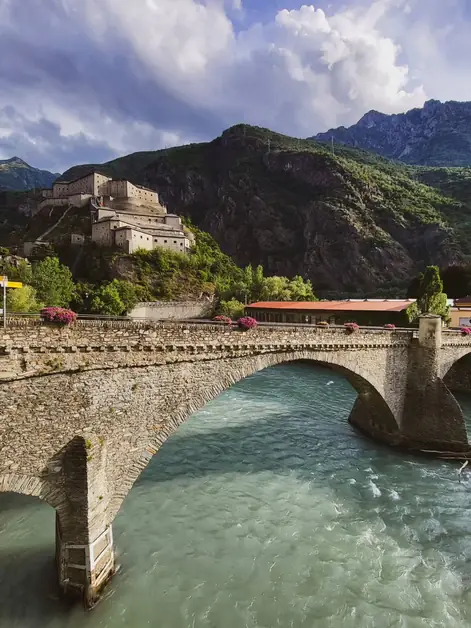Trekking between history and nature in Villeneuve
Explore the trekking between history and nature in Villeneuve, Aosta Valley.
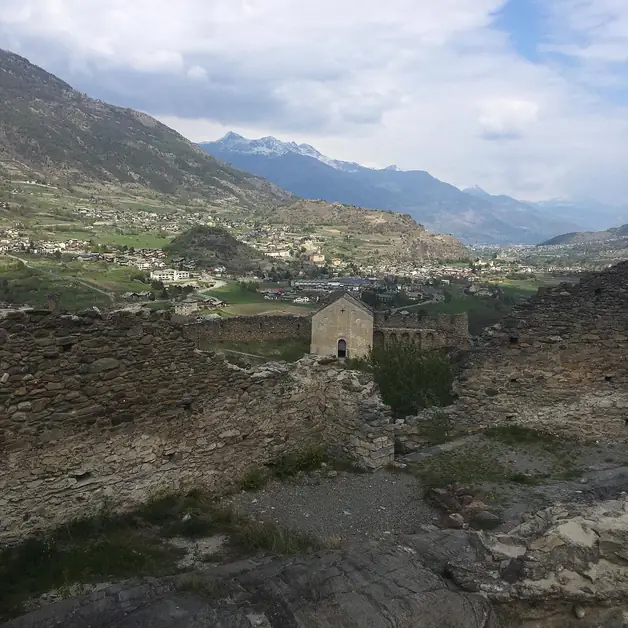
Where is the Church of Santa Maria in Villeneuve?
The Church of Santa Maria is located just outside the center of Villeneuve, in the Aosta Valley. It is built on paleochristian foundations and dates back to the year 1000. The location is striking: it stands on a cliff overlooking the Dora Baltea valley, with the bell tower proudly silhouetted against the mountains. Reaching it means entering an atmosphere suspended between spirituality and nature.
How to get to Villeneuve by car?
For those traveling by car, the route is simple. From Aosta, just take the state road towards Courmayeur. After about 10 kilometers, you arrive in Villeneuve. Once in the village, there are signs for both the Church of Santa Maria and the path leading to the Castle of Châtel-Argent. There are parking spaces available near the center and along the main road.
Is it possible to reach Villeneuve by public transport?
Yes, buses from Aosta run to Villeneuve in about 20 minutes. The stop is located near the center of the village, from where you can continue on foot. This way, you can easily reach both the Church of Santa Maria and the path leading to the castle. The walk also allows you to observe closely the stone houses and vineyards surrounding the village.
What is the path like that connects the Church of Santa Maria to the Castle of Châtel-Argent?
The path begins from the small cobbled road leading to the cemetery in front of the church. The worn stones tell the story of pilgrims and locals who have walked this same path for centuries. After the church, the trail continues uphill, crosses the mountain, and takes about 30 minutes to reach the ruins of the Castle of Châtel-Argent. The path is well marked and offers continuous panoramic views of the valley and the snow-capped peaks.
What does it feel like to stand in front of the Romanesque bell tower of the Church of Santa Maria?
The feeling is that of standing before an intact fragment of the Middle Ages. The bell tower, which has dominated the valley for a thousand years, conveys solidity and continuity. Each stone seems to hold ancient stories, and the position, suspended over the cliff, enhances the impression of strength and spirituality. Looking down, you can see the impetuous Dora Baltea flowing, while upward the path invites you to continue towards the castle.
What views can be admired along the trek to the Castle of Châtel-Argent?
The route offers different views at every turn. From the church, you can see the Dora Baltea valley, with vineyards climbing the slopes. As you ascend, the panorama opens up towards the surrounding mountains, often still snow-covered in spring. Upon reaching the ruins, the cylindrical tower of the castle appears in all its grandeur, framed by the clear sky and alpine peaks. The whole creates a landscape that resembles a painting.
What is the history of the Castle of Châtel-Argent?
The Castle of Châtel-Argent dates back to the 11th century and was built in a strategic position to control the valley. It was a lookout and defense point on the communication routes between Aosta and Mont Blanc. Over the centuries, it has been the scene of events and power shifts, until its abandonment. Today, the cylindrical tower, parts of the walls, and the ruins of the internal structures remain, continuing to evoke the importance of that place in the Middle Ages.
How long does it take to visit the church and castle on the same trek?
To visit the Church of Santa Maria, walk the path, and reach the castle takes about two hours in total, not counting stops. The route is short, but the beauty of the views and the charm of the places invite you to slow down, to stop to observe and take photographs.
What atmosphere is felt among the ruins of the Castle of Châtel-Argent?
Among the crumbling walls and the tower that still stands, the atmosphere is intense. You can feel the silence interrupted only by the wind, and your gaze sweeps over the mountains and the valley below. The stones tell centuries of history, while the surrounding environment conveys a sense of harmony between nature and memory. Every corner invites you to imagine what life must have been like here centuries ago.
What seasons are ideal for trekking in Villeneuve and to the Castle of Châtel-Argent?
Spring and autumn are perfect for enjoying the colors of nature. In spring, the meadows are covered with flowers, and the mountains still bear snow on their peaks. In autumn, the vineyards around Villeneuve ignite in red and gold. Summer offers clear skies and long days, while winter, although more challenging, provides the striking image of the ruins immersed in snow.
What can be seen from the ruins of the Castle of Châtel-Argent?
From the ruins of the Castle of Châtel-Argent, the gaze sweeps in all directions. Below, you can see the small chapel that once was part of the medieval complex, nestled among the walls that still resist time. Around, the remains of the fortifications tell the power that the castle had in past centuries. Looking up beyond the ancient stones, the panorama opens up onto the Dora Baltea valley, with villages scattered along the slopes and green fields coloring the valley floor. In the background, the mountains, sometimes still snow-covered, create a strong contrast with the gray tones of the ruins. It is a point where history and landscape meet, offering the visitor a vision that unites the silence of the past with the vitality of the modern villages scattered throughout the valley.
